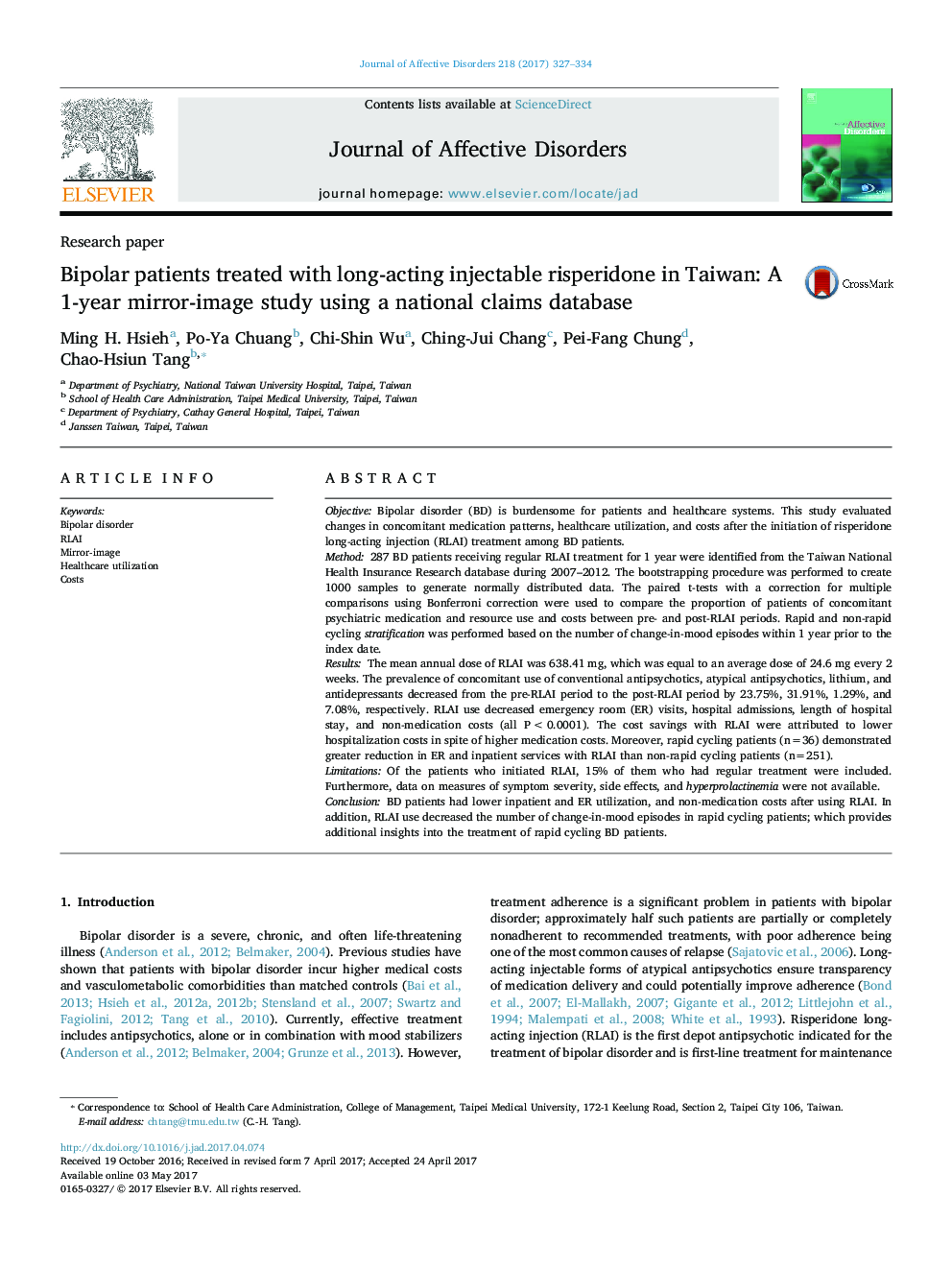| کد مقاله | کد نشریه | سال انتشار | مقاله انگلیسی | نسخه تمام متن |
|---|---|---|---|---|
| 5721964 | 1608107 | 2017 | 8 صفحه PDF | دانلود رایگان |
- First population-based study on the impact of RLAI on resource use and costs, stratify by rapid and non-rapid cycling, in treating BD patients.
- BD patients with regular treatment of RLAI, had lower inpatient and ER use and costs after RLAI use, in spite of higher total medication costs.
- The prevalence of concomitant use of conventional and atypical antipsychotics, lithium, and antidepressants decreased after RLAI use.
- Rapid cycling patients demonstrated greater reduction in ER and inpatient services with RLAI than non-rapid cycling patient.
ObjectiveBipolar disorder (BD) is burdensome for patients and healthcare systems. This study evaluated changes in concomitant medication patterns, healthcare utilization, and costs after the initiation of risperidone long-acting injection (RLAI) treatment among BD patients.Method287 BD patients receiving regular RLAI treatment for 1 year were identified from the Taiwan National Health Insurance Research database during 2007-2012. The bootstrapping procedure was performed to create 1000 samples to generate normally distributed data. The paired t-tests with a correction for multiple comparisons using Bonferroni correction were used to compare the proportion of patients of concomitant psychiatric medication and resource use and costs between pre- and post-RLAI periods. Rapid and non-rapid cycling stratification was performed based on the number of change-in-mood episodes within 1 year prior to the index date.ResultsThe mean annual dose of RLAI was 638.41Â mg, which was equal to an average dose of 24.6Â mg every 2 weeks. The prevalence of concomitant use of conventional antipsychotics, atypical antipsychotics, lithium, and antidepressants decreased from the pre-RLAI period to the post-RLAI period by 23.75%, 31.91%, 1.29%, and 7.08%, respectively. RLAI use decreased emergency room (ER) visits, hospital admissions, length of hospital stay, and non-medication costs (all P<0.0001). The cost savings with RLAI were attributed to lower hospitalization costs in spite of higher medication costs. Moreover, rapid cycling patients (n=36) demonstrated greater reduction in ER and inpatient services with RLAI than non-rapid cycling patients (n=251).LimitationsOf the patients who initiated RLAI, 15% of them who had regular treatment were included. Furthermore, data on measures of symptom severity, side effects, and hyperprolactinemia were not available.ConclusionBD patients had lower inpatient and ER utilization, and non-medication costs after using RLAI. In addition, RLAI use decreased the number of change-in-mood episodes in rapid cycling patients; which provides additional insights into the treatment of rapid cycling BD patients.
Journal: Journal of Affective Disorders - Volume 218, 15 August 2017, Pages 327-334
